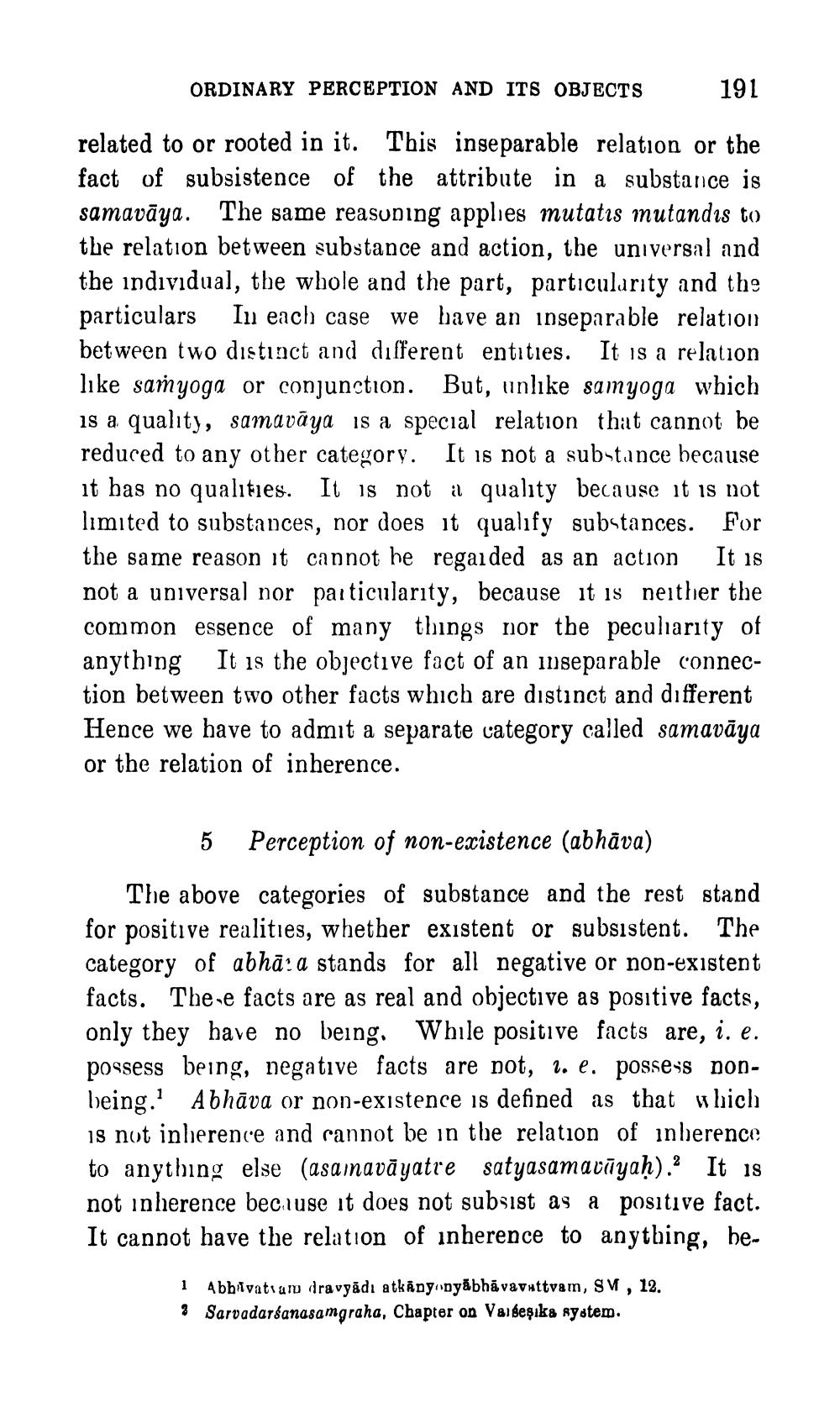________________
ORDINARY PERCEPTION AND ITS OBJECTS
191
related to or rooted in it. This inseparable relation or the fact of subsistence of the attribute in a substance is samavāya. The same reasuning applies mutatis mutandis to the relation between substance and action, the universal and the individual, the whole and the part, particularity and the particulars In each case we have an inseparable relation between two distinct and different entities. It is a relation like saryoga or conjunction. But, unlike samyoga which is a quality, samavāya is a special relation that cannot be reduced to any other category. It is not a substance because it has no qualities. It is not i quality because it is not limited to substances, nor does it qualify substances. For the same reason it cannot be regarded as an action It is not a universal nor particularity, because it is neither the common essence of many things nor the peculiarity of anything It is the objective fact of an inseparable connection between two other facts which are distinct and different Hence we have to admit a separate category called samavāya or the relation of inherence.
5 Perception of non-existence (abhāva) The above categories of substance and the rest stand for positive realities, whether existent or subsistent. The category of abhā: a stands for all negative or non-existent facts. The e facts are as real and objective as positive facts, only they have no being. While positive facts are, i. e. possess being, negative facts are not, l. e. possess nonbeing. Abhāva or non-existence is defined as that which is not inherence and cannot be in the relation of inherence to anything else (asainavāyatre satyasamavāyaḥ). It 18 not inherence beciuse it does not subsist as a positive fact. It cannot have the relation of inherence to anything, he
1 Abbivatram dravyādi atkānganyabhāvavuttvam, SV, 12. % Sarvadarśanasamgraha, Chapter on Vazgeşike system.




